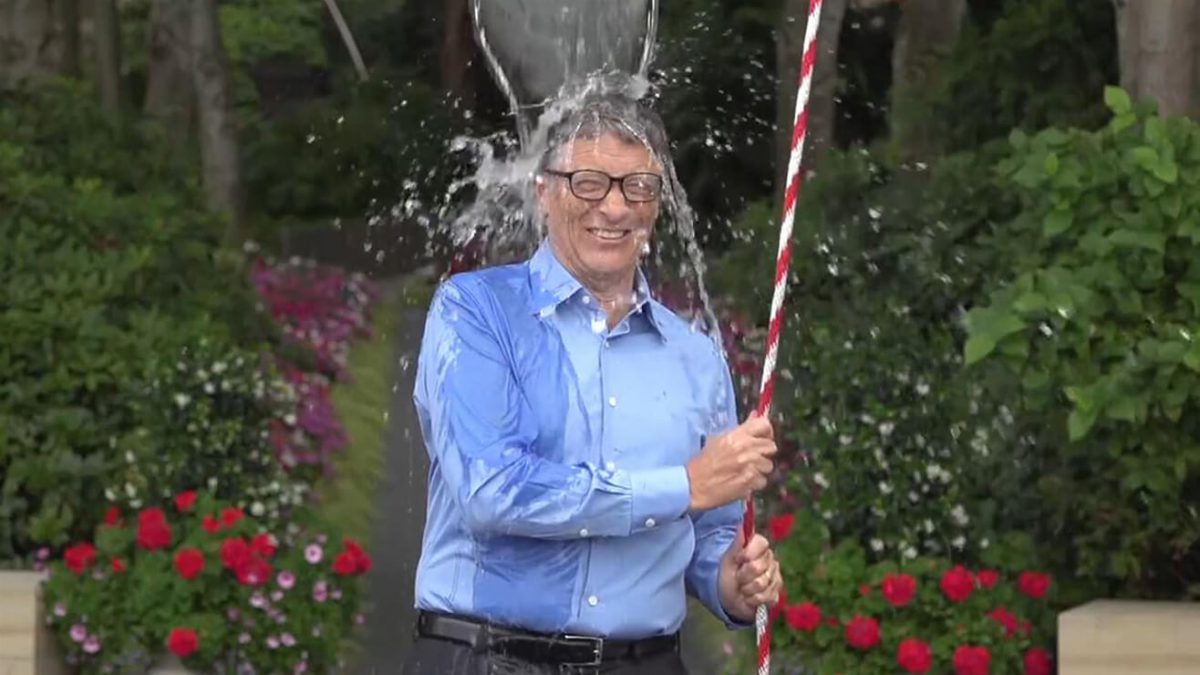If you want someone to share your videos, you first have to understand what might motivate them to do so. As it turns out, when a piece of content elicits an emotional response from the person viewing it online, the chances that they’ll share it go way, way up. But, why?
Here’s an in-depth look at the science behind why we share videos online, with examples and takeaways you can put to work right away.
Happiness, Awe, and Surprise
This power trio of emotions speaks to the major role positivity plays in sharing content online. As they say, laughter is the best therapy. Importantly, this results in a physiological reaction, and increases our level of arousal (meaning, alertness and excitement). As research has shown, this makes us more likely to share something with other people.
Examples abound of videos that result in joyful experiences for audiences online. One of the biggest viral video campaigns of all time was the ALS Ice Bucket Challenge, which raised more than $115 million in charitable donations, and saw participation from millions of people across the country.
The element of surprise is strong, since you don’t know exactly when the bucket of ice water is going to appear or how the person will react. The results are invariably hilarious. We couldn’t pick just one, so here’s a fun compilation of 50 of the best we’ve seen:
Frightfully Good to Share
We all have that friend who just loves scary movies, and then there are those who prefer to cower behind the couch. If you identify more with the former category, it turns out that you might actually be hard-wired to enjoy scary experiences more than others.
Research from Vanderbilt University shows that some people release a much larger amount of dopamine in response to frightening or thrilling activities. Meaning, they enjoy them a whole lot more than those who release less dopamine in response to the same stimuli.
The brain reacts very strongly and quickly to fearful events, forming impressions and memories more rapidly and firmly than for pleasant or mundane experiences. For video, this can be a great tool to leverage since you probably want people to remember what they watched.
Also, when most people are watching online videos, they probably aren’t actually in any danger, increasing the chances they will enjoy seeing something scary happen. When we are safe, seeing a frightening event can actually result in a confidence boost since we know we aren’t really facing any risk.
Why We’ll Share a Good Scare
The reasons why we might share scary content vary since people’s responses to frightening material range quite broadly. Those who enjoy it are more likely to share it because their overall experience is very positive, whereas others might seek validation that what they just saw is actually really scary.
This validation is reassuring, and is an ingrained part of human nature. If you see someone slip on ice, you’ll warn the next passerby that there’s ice ahead, right? We share what frightens us both to feel better about the shock we just went through, but also to help inform others to prevent them from experiencing the same.
Fear takes many forms. One great example of leveraging fear in a marketing video amounts to a public service announcement about leaving a dog in a hot car. Even though it says nothing about plans or deductibles, this video was a viral success for the company behind it, Tryg – a German insurance company.
However, leveraging fear, especially unintentionally, can backfire. One notorious example is from Mountain Dew. The hybrid puppy/monkey/baby that they created for their Superbowl commercial in 2016 stole the show, but not in a good way.
People certainly talked about it, but no one seemed to have anything nice to say. The strange amalgamation of body parts was generally described as nightmarish – something that would haunt people in their sleep.
Importantly, the reaction most people had to the strange animal/baby/thing completely overshadowed the product Mountain Dew were trying to market, leaving only a bad taste in people’s mouths.
Ew, Gross!
The yuck factor is a tricky one to get right, but can definitely prompt people to share. This is a much more difficult card to play for marketing or branding compared to other emotions you might try and trigger. The best ones tap into a niche with a relatively large following, and scratch an itch for viewers, so to speak.
A great example of gross videos that have a huge following are videos of extractions performed by a dermatologist named Dr Sandra Lee. She has built a large audience online using what are to some, absolutely disgusting videos.
The experience of popping a zit is relatively universal, and these videos satisfy that urge vicariously. Here is an example of one of her most popular videos (sorry in advance to those with weak stomachs).
Studies have shown that the grosser the video is, the more likely we are to share it, and to share it more broadly as well. The stronger the moral and physiological reaction we have to a video, the more likely we are to want to share that experience with others.
Gross Humor Can Be a Winning Combo
Videos featuring truly stomach-churning scenes might not be the best choice for many companies looking to ramp up their video marketing. You can still leverage the yuck factor to drive shares, but taking it down a notch or injecting some humor will likely help.
For instance, Squatty Potty hit the nail on the head when they created a video explaining how their product helps you defecate in a healthier way, racking up nearly 20 million views:
Even though the excrement is rainbow-colored, and the unicorn is pretty cute, it’s still gross to watch people eat it.
Relaxing and Calm
If you recently saw a video of a tomato being sliced in reverse, you probably know what this is all about.
Online videos are often designed to grab attention, with upbeat music and bright visual hooks. Videos that focus on the exact opposite, with calming noises and slow-moving imagery, are almost counterintuitively successful. Some are shared much more than flashy, exciting videos.
For example, Nick Offerman’s “Yule Log” video features only the actor, some whisky, and a crackling fire. Nick Offerman gazes into the camera serenely, and does not speak for 45 minutes, taking only occasional sips of scotch.
Although it’s unclear whether anyone else could pull this off with such gravitas, the video has been shared millions of times.
Takeaways For Making Videos People Want to Share
When you set out to make your next video, think about how you will foster an emotional connection with your viewers. If your goal is to get as many shares as possible, you will want to double down and try to get a strong reaction out of anyone who watches it.
Figure out the hook that best fits your brand and your content, and brainstorm ways to make an emotional impact with your video, using imagery, the script, music, or action. As the examples shared above showcase, the videos that work best are genuine and authentic, so don’t fake it – make sure your viewers will really feel it.








